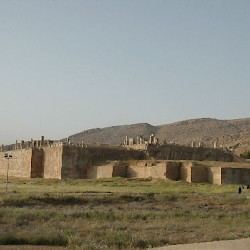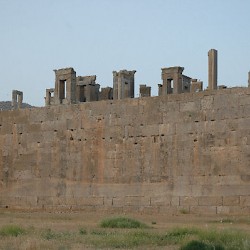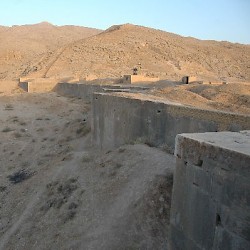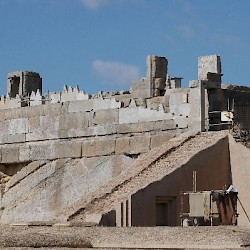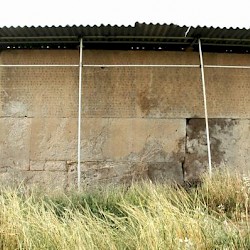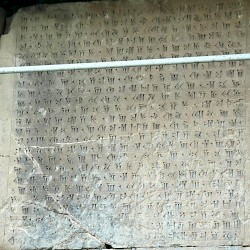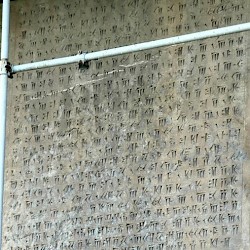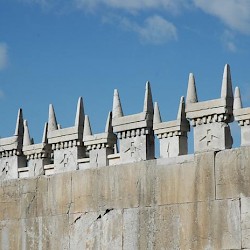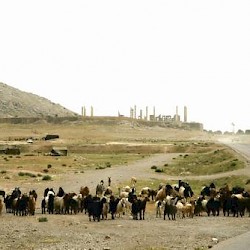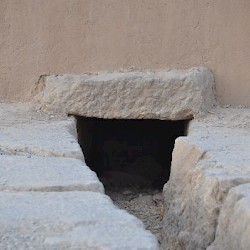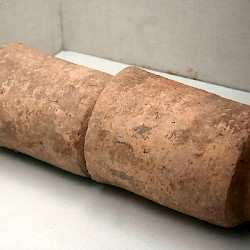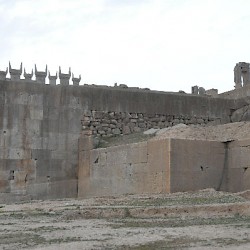Persepolis, Terrace
Q242260Persepolis (Old Persian Pârsa, modern Takht-e Jamshid): Greek name of one of the capitals of the ancient Achaemenid Empire, founded by king Darius the Great (r.522-486 BCE). There were several satellite sites, Naqš-e Rustam and Takht-e Rustam.
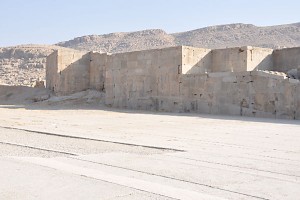
The terrace of Persepolis is am enormous artificial platform, measuring 450x300 meters. The central part is 18 meters high. It belongs to the first building phase of the city, which is usually dated to 518-490. The Treasury and the Apadana belong to the same period.
Persepolis is built on the spur of a rock called Mount Mercy. The second picture shows how the original rock (with the diagonal layers) was cut away and how the terrace, made of square blocks, was built on top of it. The inner core of the terrace was made of boulders, pieces of rock, and other stones. Similar structures can be seen at Dascylium, although the stones in the satrapal capital of Hellespontine Phrygia are more regular.
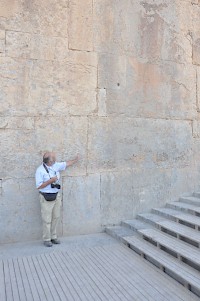
The southern part of the terrace is lower. The buildings over here, sometimes called Southern Buildings, were used as houses of the personnel. They are lower than the palaces - out of sight. (The same applies for the villa of the Roman emperor Hadrian at Tivoli: the store rooms and slaves' apartments are at the lower level.)
On the southern retaining wall, an inscription was made: two parts (DPd and DPe) are in Persian, and describe the building project and the dimensions of the Achaemenid Empire. They are summarized in Elamite and Babylonian (DPf and DPg). Probably, this was the original entrance of the complex. Later, Xerxes moved the main access to the northwest, where the Gate of All Nations was built.
On the western edge of the terrace, a group of "horns" can be seen, not far from the Palace of Artaxerxes I. No one knows the significance of these, but perhaps looking for significance is just a wrong approach. Maybe the horns are just decoration without any deeper meaning.
